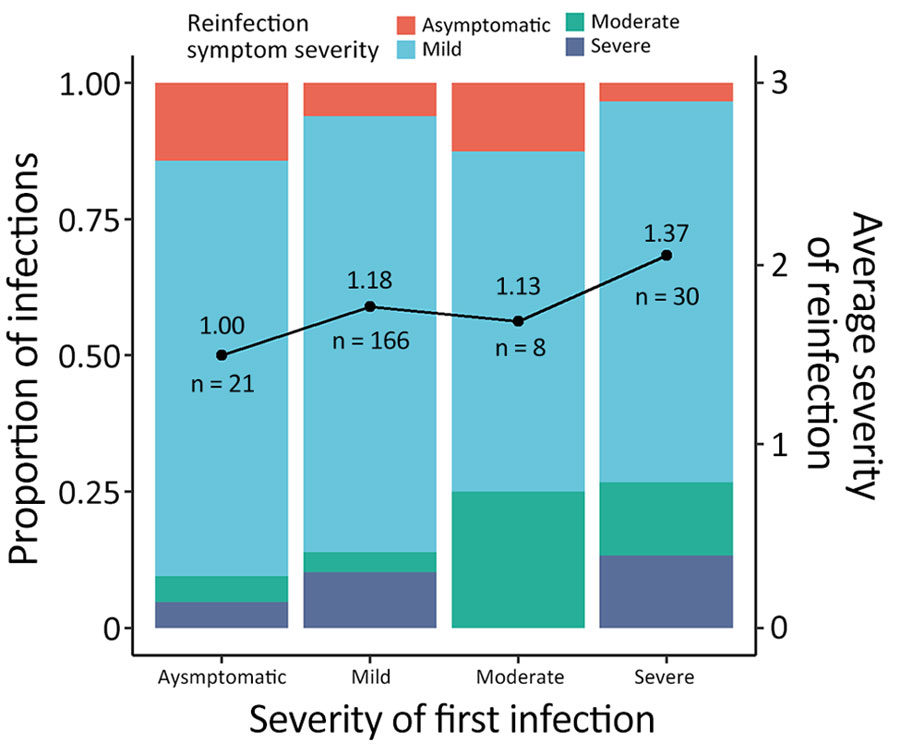Using SARS-CoV-2 Sequencing Data to Identify Reinfection Cases in the Global Emerging Infections Surveillance Program, United States
Deanna Muehleman, Bill Gruner, Vivian Hogan, Padraic Fanning, Carol Garrett, Jennifer Meyer, Kelsey Lanter, Sarah Purves, Laurie DeMarcus, Jeffrey Thervil, Bismark Kwaah, Paul Sjoberg, Elizabeth Macias, and Anthony Fries

Author affiliation: US Air Force School of Aerospace Medicine and Defense Centers for Public Health, Dayton, Ohio, USA (D. Muehleman, B. Gruner, V. Hogan, P. Fanning, C. Garrett, J. Meyer, K. Lanter, S. Purves, L. Demarcus, J. Thervil, B. Kwaah, P. Sjoberg, E. Macias, A. Fries); JYG Innovations, Dayton (D. Muehleman, B. Gruner, S. Purves); Henry Jackson Foundation, Rockville, MD, USA (V. Hogan); ERP360 Solutions Group LLC, Washington, DC, USA (P. Fanning, J. Meyer, K. Lanter); Innovative Element LLC, Washington (L. Demarcus, J. Thervil, B. Kwaah, P. Sjoberg)
Main Article
Figure 3

Figure 3. Reinfection symptom severity in study using SARS-CoV-2 sequencing data to identify reinfection cases in Department of Defense Global Respiratory Pathogen Surveillance Program, United States. Proportions of reinfections with different symptom severity at the second specimen collection timepoint are compared with the first specimen collection date. Symptom severity was assigned numeric values: 0, asymptomatic; 1, mild; 2, moderate; and 3, severe. Numbers along data line indicate the average infection symptom severity (top number) and number of reinfections (bottom number). Reinfection symptom severity correlated with symptom severity during the first infection. Relationships were determined by linear regression; adjusted p value = 0.0131, adjusted for sex and age.
Main Article
Page created: October 08, 2024
Page updated: November 11, 2024
Page reviewed: November 11, 2024
The conclusions, findings, and opinions expressed by authors contributing to this journal do not necessarily reflect the official position of the U.S. Department of Health and Human Services, the Public Health Service, the Centers for Disease Control and Prevention, or the authors' affiliated institutions. Use of trade names is for identification only and does not imply endorsement by any of the groups named above.
